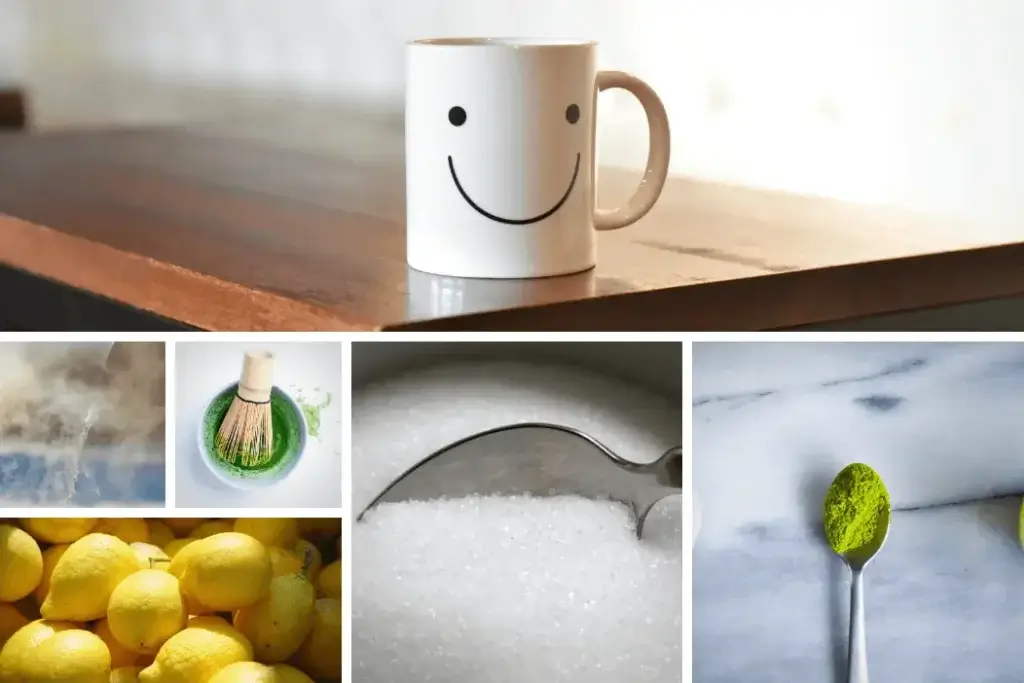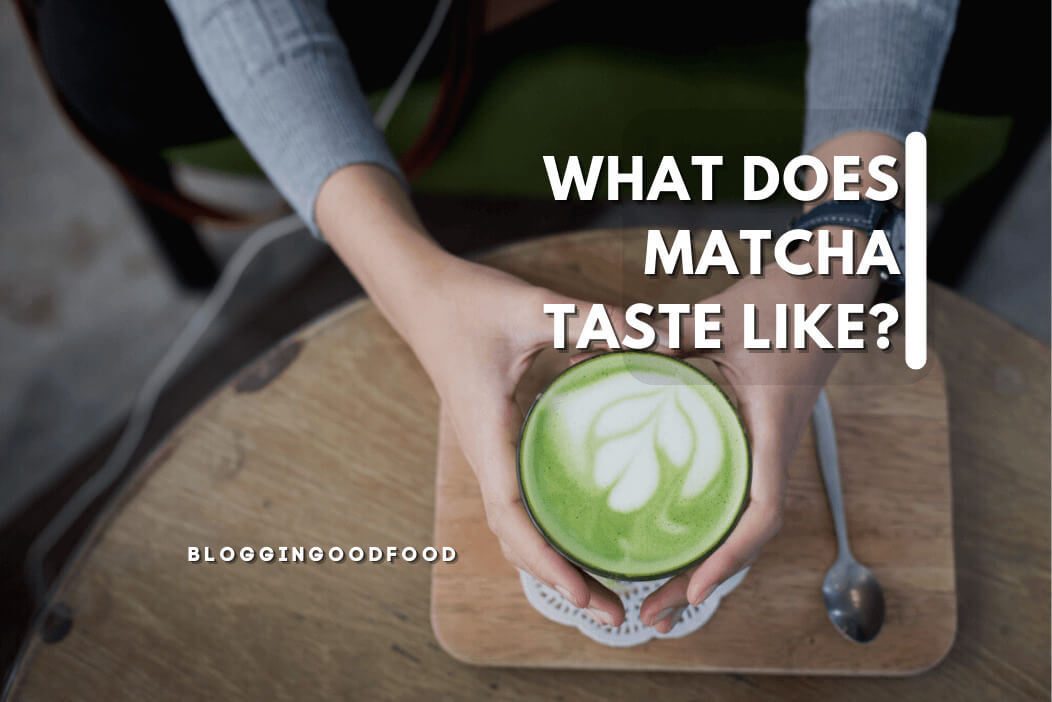The actual taste of matcha is sweet and bitter. You can enhance its flavor according to your taste buds. We can use matcha in hot water and condensed milk to add sweetness. People around the globe love to take matcha after food because it accelerates digestion.
Matcha contains antioxidants and is very beneficial for health. In exact words, we can matcha is green tea powder. Before you buy matcha, you need to decide what you’ll use it for. Will you be consuming it in its traditional tea shape? Or will you be adding matcha to some of your favorite recipes?
Continue reading to learn more about matcha’s distinct flavor and smoothness and how to get the most out of your first cup of matcha.
Table of Contents
Matcha is Different from Green Tea:

Yes, matcha is different from green tea as it is grown with various processes, Even though the plant or seed is the same.
Green tea and matcha tea are grown in different ways. Matcha tea is cultivated in the shadow for about three weeks before harvesting, in contrast to green tea, produced in the sun during production. Matcha tea is known for its vivid green color, in contrast to green tea, which tends to turn a muted green with a brownish cast over time. The shade raises the chlorophyll levels in the leaves, resulting in brightly colored matcha.
Harvesting of green tea is by machine and is sent to the plant directly, and it is steamed to stop fermentation. Whirling engines then blow and dry the leaves. Matcha tea leaves are harvested manually by hand-selecting the plants to get the best tea leaves. We must remove stems and veins; the leaves are stone-ground into matcha powder.
How to Make a Matcha Tea:

The first thing to remember is that matcha is in green powder form, so when we mix it in water or milk, it does not dilute. It just scatters in the liquid. If you need to mean a matching tea, you need a cup of water that is warm enough, around 90 Celsius. Mix the matcha tea powder in the cup with a tablespoon. Add sugar as per your desire.
If you need milk tea, only you need milk other than water and matcha. For this, you have to boil half a cup of water. After cooking, add half a cup of milk. Adding milk depends on you that how much milk you want. After adding milk and water, you must add one-half tablespoon of matcha.
You can also make matcha cold tea by using only milk and ice. The whole process is the same. The only thing you don’t need in this is water. Through this process, you can make delicious cold matcha tea at home.
If you want some extra flavor in the matcha tea, add cardamom and mix it with a bamboo tea scoop.
Ingredients You Need for Making Matcha Tea:

- You will need a cup.
- Hot water.
- Cardamom and bamboo tea scoop for flavor and fragrance.
- Milk if you want to add.
- You can also use lemons.
- Sugar.
- A spoon to mix.
Equipment You Need for Making Matcha Tea:

- Microwave or a stove.
- Bowl to boil the water and milk if required.
Matcha Tasting Notes:
Matcha tea is green color fragile powder. Its flavor has pleasant bitterness and very little sourness. You will experience the aroma of lemon and fresh-cut grass. Sweetness is not the dominating as in its taste, but the sourness is more.
Matcha contains concentrated amounts of all the numerous health advantages of green tea. Additionally, it includes much caffeine, making it a refreshing and healthy tea to drink in the morning.
Keep reading this blog to learn about the health benefits below.
Factors That Affect Matcha Taste:
Various factors affect the taste of the matcha. This depends on the cultivar of the matcha plant, the soil, and the methods the farmer uses to process the tea. We can consider other factors too. For instance, the sweetener you use in your matcha, the water you use, water temperature, the ratio of water with matcha, and the origin of matcha.
The Water We Use:
There are various types of water, such as distilled water, alkaline water, glacier water, mineral water, etc. According to our research, glacier or spring water is the most used to get the best taste and texture.
Never use hard water. Hard water has a considerable quantity of undissolved minerals. It would be better to use natural soft water. The only natural soft water is glacier water. If this is not available, you can use mineral water.
Water Temperature:
Keep the temperature maximum between 80 to 90 Celsius. You have to avoid using boiling water. To warm the water, you can use a microwave or kettle. You can use the stove if you don’t have a microwave or kettle. Boil the water and leave for a few minutes to maintain its temperature.
Water Ratio:
This is the personal choice to use water, depending on your taste. Some love the thicker milk tea taste and creamy matcha, and some love the thinner matcha tea taste. Depending on the water ratio, We can divide matcha into two categories given below.
- Usucha: Its texture is thin tea. This is commonly known as matcha green tea. Usucha is for everyday drinking. For making one teacup, you can use one or one and a half tablespoons of matcha powder.
- Koicha: This one is thicker and has a creamy texture. Koicha is best for people who love thick creamy tea. You can use two to three tablespoons of matcha powder to make one teacup.
Origin:
Origin matters a lot for growing matcha. Usually, matcha can be grown on brown forest soil, lithosol, and andosol, known as volcanic soil. Matcha doesn’t need any fertilizers as they are fertilizers on their own. The first person to grow matcha tea was in Kyoto, Japan. The origin of matcha is Japan.
Benefits of Matcha Tea:
Matcha tea benefits your health because it contains antioxidants and may improve heart and brain health. It could also help with weight loss.
Matcha, like green tea, is derived from the Camellia sinensis plant. It is, however, grown differently and has a distinct nutrient profile. As a result of matcha’s recent surge in popularity, various retail establishments, ranging from health food stores to coffee shops, now offer matcha-flavored products including shots, lattes, drinks, and even desserts. If you’re a coffee lover, be sure to check out Crazy Espresso, a fantastic website that offers a wide range of coffee-related information and resources.
Studies on matcha and its components have revealed various benefits, including protecting the liver, promoting heart health, and even aiding in weight loss.
- Antioxidants: The marvelous thing about matcha is that it has natural antioxidants. Antioxidants help stabilize free radicals, compounds that can damage cells and cause chronic disease.
All the nutrients from the entire leaf are included in the tea when matcha powder is added to hot water to make tea. It will be higher in catechins and antioxidants than steeping green tea leaves in water.
Compared to other green tea, matcha contains up to 137 times more of a specific catechin than those found in other green teas, according to an estimate.
- Enhances the brain function: In addition, matcha contains a chemical called L-theanine, which modifies the effects of caffeine, improving alertness and preventing the energy crash that can occur after consuming caffeine.
Increasing alpha wave activity in the brain has also been linked to L-theanine, which may aid in promoting relaxation and lowering stress levels.
- Good for heart health: After the age of forty, thousands die from heart problems. Studies show that green tea lowers triglycerides and “bad” cholesterol levels. Additionally, it might aid in preventing the oxidation of cholesterol, which is one more thing that might shield against heart disease.
Additionally, observational studies have demonstrated a link between drinking green tea and a lower risk of stroke and heart disease.
Studies have shown that people above 30 years use matcha for better health. If teenager takes matcha one or two times a day, it would be beneficial for their health too.
- Reduces weight: Matcha speeds up the metabolism and boosts fat burning. Many studies show that green tea increases fat burning by 15%. So this theory reflects that matcha also increases fat burning because match and green tea have the same plants.
Grades of Matcha Green Powder:
There are mainly two grades of matcha, the ceremonial grade matcha, and the culinary grade matcha.
- Ceremonial Grade Matcha:
In this grade, the manufacturers use fresh leaves. After removing the stems and veins from each leaf, the leaves are crushed into stone. The ceremonial grade matcha tea powder’s bright green color, fine texture, naturally sweet flavor, and pure taste result from the leaves used and the manufacturing process. However, it should never feel gritty. This grade, available in powder and tea form, frequently smells like recently cut grass.
- Culinary Grade Matcha:
Culinary or food-grade tea is not, by any means, a low-quality tea. This variety is made differently and has different uses and flavors than ceremonial-grade matcha green tea. As its name suggests, the culinary grade is for baking and cooking.
While you can drink this grade, it’s best not to because its firm and slightly bitter flavor are to be combined with other ingredients in food and beverage recipes. Various smoothies and other milk-based beverages go well with the mildly astringent taste of the culinary grade.
Matcha’s Bitter Taste:
Matcha is easy to prepare and enjoy but can sometimes taste differently than you expected. With a few critical pieces of information, every mug you make will be matcha perfection.
Although it’s not the only cause of matcha turning bitter, low water temperature is frequently to blame. Once prepared, additional elements like storage and production area can influence matcha’s flavor.
These effects can be minimized or even completely avoided with the proper knowledge; these effects can be minimized or even completely avoided.
Matcha can stay fresh for a more extended period with proper storage, so it’s essential to know when it was packaged and how it is to keep before making a purchase. For the best flavor, we advise utilizing products that are as fresh as possible.
Matcha’s Mouthfeel:
We want you to use high-quality ceremonial-grade matcha powder with no pulps and clumps. You have to drink matcha immediately because it has tiny particles. Otherwise, you have to experience a few sandy sips.
If you have enough time to wait and drink not much hot matcha, you can wait a few minutes to let the matcha particles settle down.
The consistency of high-quality matcha should be smooth and slightly frothy with no noticeable grittiness when properly prepared and consumed immediately. If you need thicker consistency, you need more powder, whereas, for a thinner mixture, you have to use less powder. It all depends on your personal preferences.
Frequently Asked Questions:
Do matcha and green tea taste the same?
Matcha has a much stronger flavor than green tea. It has a more intense green tea flavor.
Does matcha have caffeine?
Yes, matcha has caffeine but relatively less than coffee. If we compare matcha and green tea, matcha has more caffeine.
Does matcha taste like fish?
No, matcha is formed by crushing the leaves. It doesn’t smell like a fish. Its flavor has pleasant bitterness and very little sourness.
How to sweeten matcha tea?
You can sweeten matcha by using syrups, sugar, and sugar substitutes. The syrup you can use is maple syrup. You can use white and brown sugar. If you are health conscious, you can use brown sugar. If you are a diabetic patient, you can use artificial sweeteners.
Conclusion:
The flavor of matcha is similar to that of green tea but stronger. A grassy, bitter taste with a sweet aftertaste is one of its defining features. Instead of being gritty, its texture ought to be smooth.
Even though pretty green lattes may tempt you, drinking matcha simply and traditionally with hot water will give you an authentic matcha taste and more health benefits.
We hope this blog is helpful and provides you with the necessary information.






